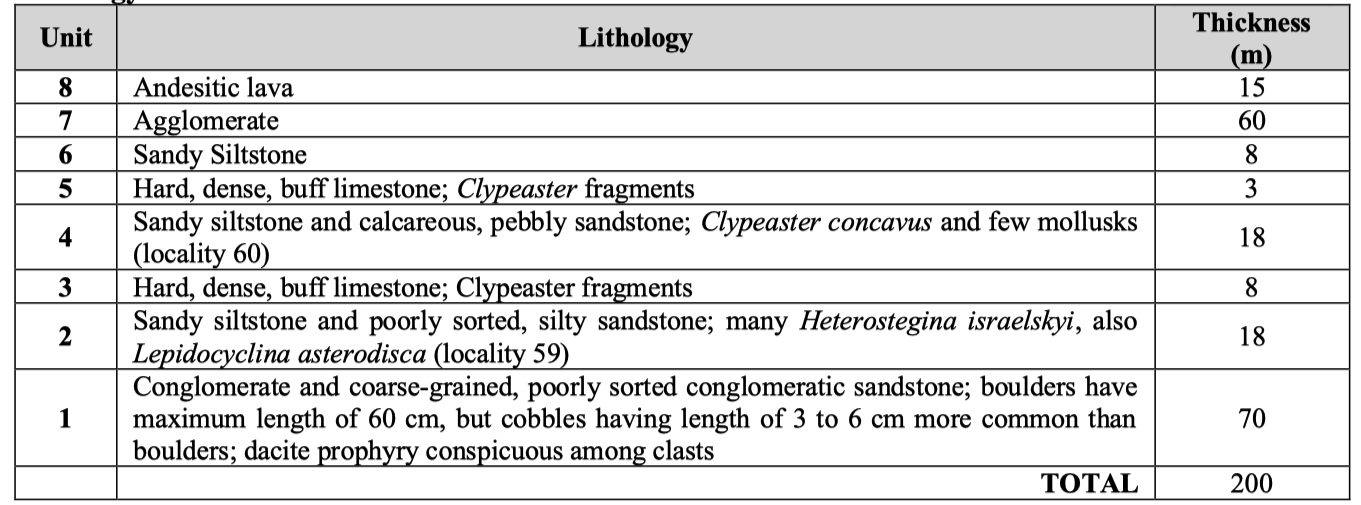Caraba Fm
Type Locality and Naming
The thickest well exposed section so far found is in the type region. It is located south of the Gamboa Reach of the Panama Canal, along a tributary of Río Mandinga, about 4 kilometers southwest of Gamboa and about 750 meters east of Río Caraba.
Synonym: Caraba Facies of the Caimito Fm
Lithology and Thickness
These strata, characterized by the exceptional thickness of conglomerate and conglomeratic sandstone, presumably interfinger with the Caimito Fm. The total thickness of the Caraba is unknown, even in the type region, as the base and top have not been recognized.
Where the Caraba Fm reappears northeast of the Canal (Table 1), it consists almost wholly of agglomerate, in which blocks and slabs of decite porphyry generally predominate, and agglomeratic tuff. North of Pedro Miguel the agglomerate is shown on some geologic map as part of the Pedro Miguel agglomerate, and in the area straddling the part of Madden Highway south of the Transisthmian (or Boyd-Roosevelt) Highway overpass as part of the Caimito Fm. Exposures may be seen at the falls on the east side of Madden Highway at the monument site four kilometers south of the overpass and on abandoned Army roads east of the highway.
Thickness: >200 m
[Table 1. The section exposed along a tributary of Río Mandinga, as recorded by Stewart et al. (1980) and Woodring (1982).]
GeoJSON
Fossils
- Larger foraminifera: Nummulites panamensis Cushman, Heterostegina israelskyi Gravell and Hanna, Lepidocyclina asterodisca Nuttall,
- Coral: Goniopora cf. G. cascadensis Vaughan
- Gastropods: Pachycrommium? aff., P.? trinitatensis (Mansfield), Ficus sp., group of F. ventricosa (Sowerby)
- Echinoid: Clypeaster concavus Cotteau
Age
Depositional setting
Additional Information
References:
- Jones (1950)
- Woodring, W. P. (1957, 1970, 1982);
- Stewart et al. (1980)
